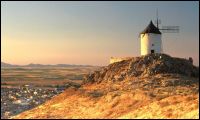Compare costs
Average cost of treatment in key countries
Include indicative costs for treatment, travel, insurance and accommodation
Get a quote
1. Complete the enquiry form
2. Select countries of interest
3. Providers respond directly
Separated from the rest of Europe by the Pyrenées, Spain stretches to the tip of North Africa and comprises the Canary Islands, the Balearics and the North African cities of Ceuta and Melilla. With lush green forests, snow-tipped mountain peaks, extraordinary architecture and endless sandy beaches Spain is best described as a country of contrasts.
Traditional images of Spain might conjure up rows of holiday-makers languishing on beaches in the Costas. Since the 1960s Spain has been a popular package holiday destination for the British and other Europeans, and more latterly a booming property investment market, but there is so much more to the country than busy tourist resorts. Spain has a good helping of passion - think heart-wrenching operas, heated flamenco dancing and bull-fighting which has enjoyed a renaissance since the late eighties - as well as an abundance of natural beauty, cultural and artistic cities and gastronomy which rivals anywhere else in Europe.
The country is divided into 17 autonomous regions and has four official languages; the traditional language is Castellano, and Catalan is spoken in the Catalonia region, Gallego in Gallicia and Euskera in the Basque area. Since 1975 Spain has been a constitutional monarchy which joined the EC in 1986 and hosted the Olympic Games in Barcelona in 1992 and Expo ‘92 in Seville. Spain's population is in the region of 46 million, with around 11 percent of people who live here born outside Spain.
The Spaniards are a nation of fun-loving people with an infectious enthusiasm for life who find any excuse for a party - there is a fiesta on almost every day of the year whether it’s to celebrate a religious event or simply the change of season. And like all of the Mediterranean countries the Spaniards place big importance on meal times, spending long leisurely lunches around the table with friends and family followed by (in the very hot regions) a siesta.
Popular Spanish dishes include Paella and plates of Tapas such as Cured Ham, Tortilla Espanola, Calamares Fritos, Gambas a la Plancha and Patatas Bravas but the many cultures and civilisations which have settled in Spain over the years have also greatly influenced Spanish cuisine and each region has its own speciality. With such importance placed on entertainment, and eating being one of their most pleasurable activities, it comes as no surprise that there are more bars and restaurants per head in Spain than in any other country.
The capital of Spain is Madrid which is located right in the centre of the country and hosts three of the world’s finest galleries and museums. The Paseo del Arte (The Art Walk) is a beautiful tree-lined pedestrian walkway linking the Prado, Thyssen Bornemisza and Queen Sofía National Art Centre which takes visitors on a journey through painting, sculpture and art from classical antiquity to the present. Madrid is also known as the capital of Tapas, those delicious mouth-watering dishes which wash down so nicely with a glass of Jerez Sherry, sparkling Cava or a Rioja wine.
However, Barcelona is probably Spain’s most fêted city, well known for the art nouveau designs of Antonio Gaudí and the outstanding Sagrada Familia church (abandoned in 1962 but work now resumed) as well as for being at the forefront of contemporary art and architecture hosting a plethora of art galleries and museums. In the 11th and 12th centuries religious pilgrims on their way to Santiago de Compostela travelled through Barcelona bringing French building styles with them and between 1890 and 1910 an art nouveau movement was born. Stroll along Las Ramblas then around the meandering streets of the gothic quarter and take the train to nearby seaside resort, Sitges, a stylish and cosmopolitan town popular with young trend setters.
In the south Málaga is the capital of the Costa del Sol and the second largest city in the region of Andalucia. The wonderful beaches are ideal for water sports or just catching some rays before visiting the city’s stunning cathedral or viewing artwork by the master of cubism at the Picasso Museum. The popular holiday resorts of Fuengirola, a fishing port offset by its ochre mountains and Torremolinos are located at the very heart of the Costa del Sol, where the sun is known to shine for 300 days a year.
Marbella is the ultimate in exclusivity and sophistication and has over the years been the playground for movie stars and royalty alike. Located at the foot of the Sierra Blanca Marbella has a wonderful array of restaurants and bars to suit all tastes and prices, as well as great shopping, world-class golf courses and beautiful sandy beaches.

| Population: | 46 Million |
|
|
|
| Currency: | Euro |
|
|
|
| Capital: | Madrid |
|
|
|
| Languages: |
Spanish (74%) Catalan (17%) Galician(7%) Basque (2%) |
|
|
|
| Religions: |
Roman Catholic (94%) Other (6%) |

Part of Caser Group, Operarme.com is a private medical service company specialising in complete surg
Dr Ricardo Diez Valle Neurosurgery
Based at two leading hospitals in Madrid, Dr Ricardo Diez Valle Neurosurgery offers expert diagnosis
Atrys
Atrys is a global company dedicated to providing precision diagnostic services and state-of-the-art